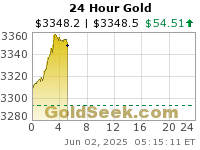I decided to take a new position in VelocityShares VIX 2X ETN (TVIX) at $16.25. By luck I managed to buy just 5 cents above the low for the day. The True Strength Index (TSI) indicator read -0.90 at the moment of my purchase. Usually these kind of extreme negative readings lead to a bounce in price. Anyway, this is the chart I made just after my purchase.
Click on any chart to ENLARGE
I made this second chart of TVIX a few minutes ago to show where price traveled after my purchase and also to suggest that TVIX appears to be giving some thought to breaking out above $16.85. We shall see tomorrow.
And finally, I made this daily chart of the SP-500 with the TSI (7,4). The blue rectangles show where the TSI indicator has spent time below ZERO with the SP-500 carnage just overhead. Sometimes the correction is begun as the TSI flits like a butterfly just above and below ZERO. Other times a single sharp downward spike is all it takes. If the SP-500 were to drop another 6-7 points, as it did today, that would be enough to create a trend line break and the bears may just decide it is game on - finally.
My TSI Trading record has been updated.
My TSI Trading record has been updated.













![[Most Recent Quotes from www.kitco.com]](http://www.kitconet.com/images/quotes_special.gif)



